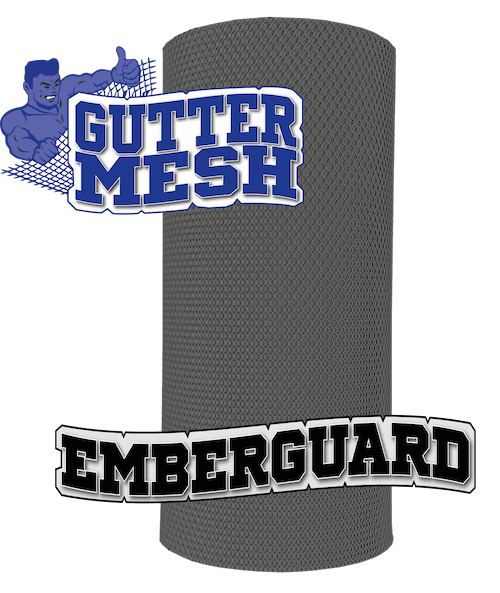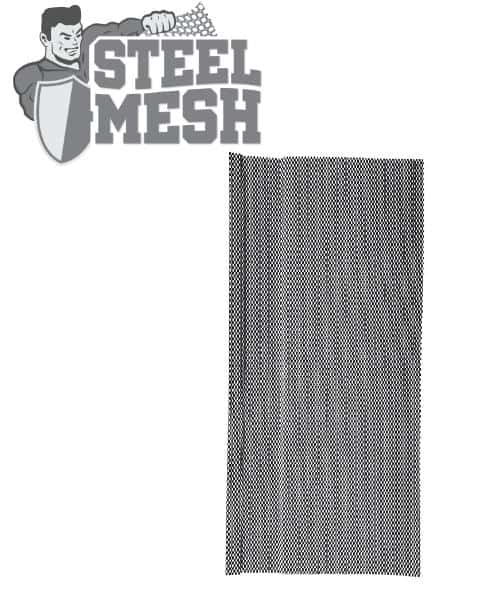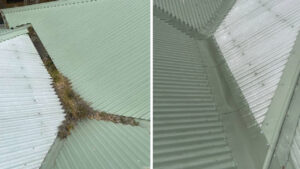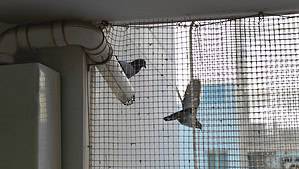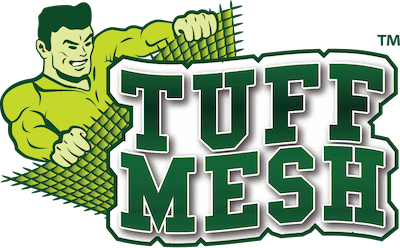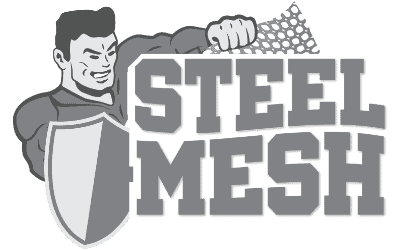Ember attacks are a significant concern during bushfires, as they can ignite spot fires ahead of the main firefront, making it difficult for firefighters to control the spread of the fire. Ember guards, also known as ember protection systems, are designed to protect homes and buildings from ember attacks and prevent embers that the wind may carry.
Read: Are your bushfire ready?
What is ember guard protection?
Ember guard mesh is a special gutter guard product designed to block windborne embers while allowing rainwater to filter through the gutter system. An ember guard product must meet specific material and installation measures to intrinsically ember-proof a property.
An ember attack is a type of bushfire hazard that occurs when burning debris, such as branches and leaves, are carried by the wind and ignite structures and other materials that are not in the direct path of the fire front.
An ember attack can occur up to several kilometres from the main firefront and can cause a significant amount of damage to buildings, property and infrastructure. Ember attacks can also cause spot fires, which can lead to the spread of bushfires. Buildings should be constructed using fire-resistant materials and have proper ember protection measures such as gutter guards, screens and roofing materials to protect against flammable debris.
Ember mesh also keeps the gutter clear of small debris such as pine needles, jacarandas and she-oaks. Ember guard is suitable for all leaf guard measures against leaves and debris.
Speak to us about getting ember guards installed for your home.
What are ember guard requirements?
A fire ember guard-compliant mesh requires a minimum 2mm aperture size. The ember guard mesh must be made from non-combustible materials; aluminium, steel or bronze gutter guards. You must-have non-combustible mesh to meet fire safety standards in bushfire-prone areas and protect from burning embers. An ember guard-compliant mesh and materials depend on bushfire attack level ratings in your area that withstand radiant heat.
Ember guard installation is also essential to ember guard specification. Ember guards should be installed on all sides of the building, including the roof cavity, guttering system, roof valleys, ventilation systems, solar panels, air-conditioning units and walls to ensure that burning embers cannot enter the building. They should also be installed close to the roofline and walls to ensure that burning embers do not build up and ignite the structure.
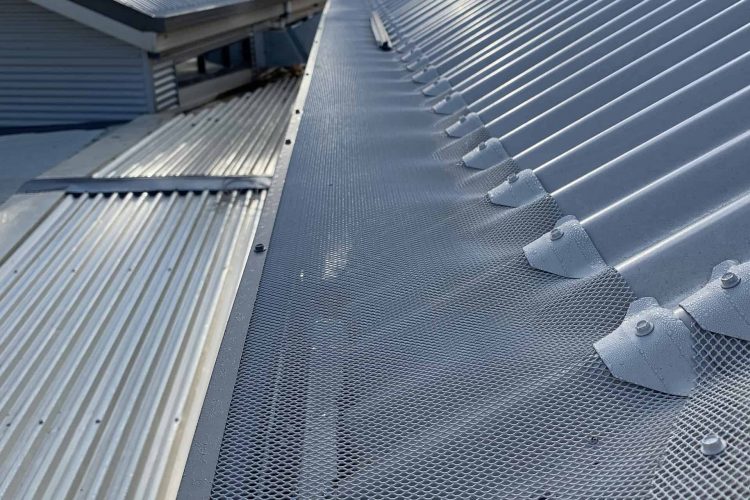
Ember guards can also be combined with other fire protection measures, such as fire-resistant roofing and walls, to provide additional protection. For example, metal mesh ember guards can be installed on top of fire-resistant roofing to provide an extra layer of protection. Additionally, homeowners use ember guards in conjunction with automatic sprinkler systems to suppress fires that may be ignited by burning debris.
It is important to note that ember guards are not a substitute for other fire protection measures, such as evacuation planning, and should be used in conjunction with other measures to ensure the safety of residents and buildings in all bushfire-prone areas.
It is also important to remember that ember guards require regular maintenance to ensure that they are in good working condition and can effectively protect the building. This includes cleaning and inspecting the ember guard for damage or debris and repairing or replacing it as necessary.
Difference between ember guard and gutter guard
Many gutter guards are fireproof and meet Australian standards for bushfire attack levels BAL. The primary difference between gutter guard mesh and ember guard mesh is the hole size specifications. Ember guards are suitable in aluminium, bronze and steel mesh.
The smaller hole size in the ember mesh does make water sheeting more of a concern– significant rain or heavy downpours do not filter through the guard to the gutters. Aussie Gutter Protection designs all aluminium ember guards with troughs to ensure the water filters through. Be cautious of other DIY ember guard products, as drainage and sheeting are real concerns.
Other gutter guard products come in plastic or polyethylene products. Plastic leaf guard is a fire hazard and is unsuitable for gutter guard protection in areas prone to bushfires.
You install ember mesh similar to a gutter guard. The mesh is supplied in sheets and requires a slightly different attachment. However, largely the installation techniques remain the same.
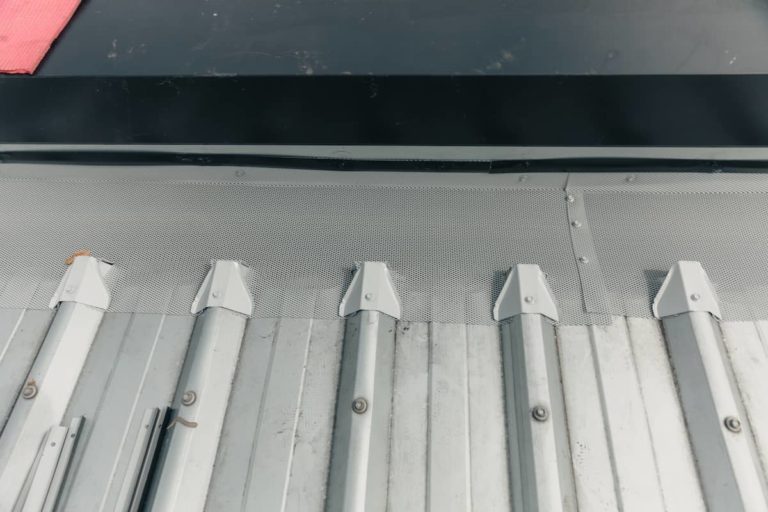
Difference between ember guard and gutter guard
The BAL ratings denote the level of bushfire risk assigned to properties in those bushfire-prone areas. Australian standards dictate specific bushfire protection methods, including ember and gutter protection needs for each bushfire-prone area. This BAL standard is especially relevant to newly built homes as a fireproof measure.
There are six bushfire attack level ratings:
- BAL-LOW – indicates low risk from fire hazards
- BAL-12.5 – indicates a risk of ember attack and windborne embers
- BAL-19 – indicates a significant risk of ember attack
- BAL-29 – indicates a high risk of ember attack
- BAL-40 – indicates an extreme risk of ember attack
- BAL-FZ (Flame zone) – indicates a severe risk of ember attack
The gutter guard and ember guard requirements differ in these bushfire risk zones.
Aluminium Ember Guards
Specifications:
- LWG: 6.0mm
- SWG: 3.0mm
- Aperture: 1.9mm (average hole size)
- Plate thickness: 1.0mm
- Strand width: 0.5mm
Features and benefits:
- Complies with AS3959–1999 / Australian Bushfire Standards
- Suitable to BAL 29
- CSIRO tested a flammability index of zero
- Akzo Nobel D1000 powder coating
- 15-year material warranty
Steel Ember Guards
Steel ember guard, bespoke for ember guard applications, must be used in extreme bushfire attack level (BAL) rated areas. Steel mesh is corrosion resistant, perfect for harsh Australian conditions. Steel Mesh is available in all Colorbond® colours. It is less malleable and pliable than aluminium mesh, making it more challenging to fit all roof types. It is also more susceptible to rust as coatings break down over time and is, therefore, better suited as a bespoke fire-rated product for BAL-40 and BAL FZ rated.
Steel Mesh meets the standard for an ember guard and a gutter guard: standard leaf guard, bird and vermin proofing, and rain harvesting solution. The small hole size also makes it suitable for fine debris like pine needles which can block your downpipes.
Read: What’s the difference between steel and aluminium gutter guards?
Specifications:
- Colorbond® steel gutter guard
- Strand width: 1.4mm
- strand thickness: 0.55mm
- Mesh weight: 2500 gsm
- Hole size: 2mm
Features & Benefits:
- Ember guard compliant & gutter guard compliant
- CSIRO non-combustible rated bushfire protection
- BAL-29, BAL-FZ rated
- Custom galvanised products available
- Made in Australia
- 20 Year Warranty
Read: Steel Mesh Case Study
Bronze Ember Guards
Bronze embers guards are the most expensive ember guard mesh for protection against burning embers. Bronze ember guards must be used in extreme bushfire attack level (BAL) rated areas: BAL-40 and BAL-FZ.
Frequently Asked Questions
What is an ember guard? A metal gutter mesh (≤ 2 mm aperture) fixed over gutters, valleys and other roof openings to stop wind-borne embers from lodging in dry leaf litter and igniting the house.
How is an ember guard different from a standard gutter guard? Both keep debris out, but only Ember Guard meets AS 3959 by using non-combustible metal and an aperture under 2 mm, so it blocks embers as well as leaves.
Which BAL ratings do AGP ember guard meshes satisfy? Our aluminium and TuffMesh ™ EmberGuard products are certified to BAL 29; our steel mesh is certified right up to BAL FZ for the most extreme zones.
Will an ember guard affect water flow in heavy rain? No. Our directional diamond pattern is engineered to allow water to flow freely while the 2 mm opening screens out debris.
Do I really need an ember guard if I already have a gutter guard? If you live in a mapped bushfire area, yes building codes require the <2 mm metal mesh. Regular plastic or wide-hole guards are non-compliant.
Can I DIY install an ember guard safely? Legally, you can, but complying with AS 3959 rules (no gaps greater than 2 mm, safe work at height) can be challenging. We recommend our licensed installers for a compliant fit and a 20-year workmanship guarantee.
Does ember guard also keep out birds and possums? Yes, the same fine metal mesh blocks birds, rodents and most insects while still letting rain through.
What warranties do you provide on your Ember Guard? Up to 25 years on the mesh (product) plus 20 years on our workmanship for AGP-installed jobs.
Will ember guard match my Colorbond® roof colour? We stock the full 25-colour Colorbond® palette plus custom powder-coat options, so we can blend seamlessly.
In conclusion, ember guards effectively protect homes and buildings from ember attacks during bushfires. They work by blocking or deflecting embers that may be carried by the wind and can be made from various materials. When combined with other fire protection measures and regular maintenance, ember guards can provide an essential layer of protection for residents and buildings during a bushfire.
Aussie gutter protection is a leader in the gutter protection industry, working with high-quality materials; products GutterMesh, TuffMesh, SteelMesh and SolarMesh; installation methods for leaf guard, bird proofing, rainwater harvesting, bushfire prevention and solar panel protection. AGP offers professional installation at affordable pricing to keep your gutters clean and ensure rainwater flows freely. Get a free consultation and the right gutter guard for your particular solution.

